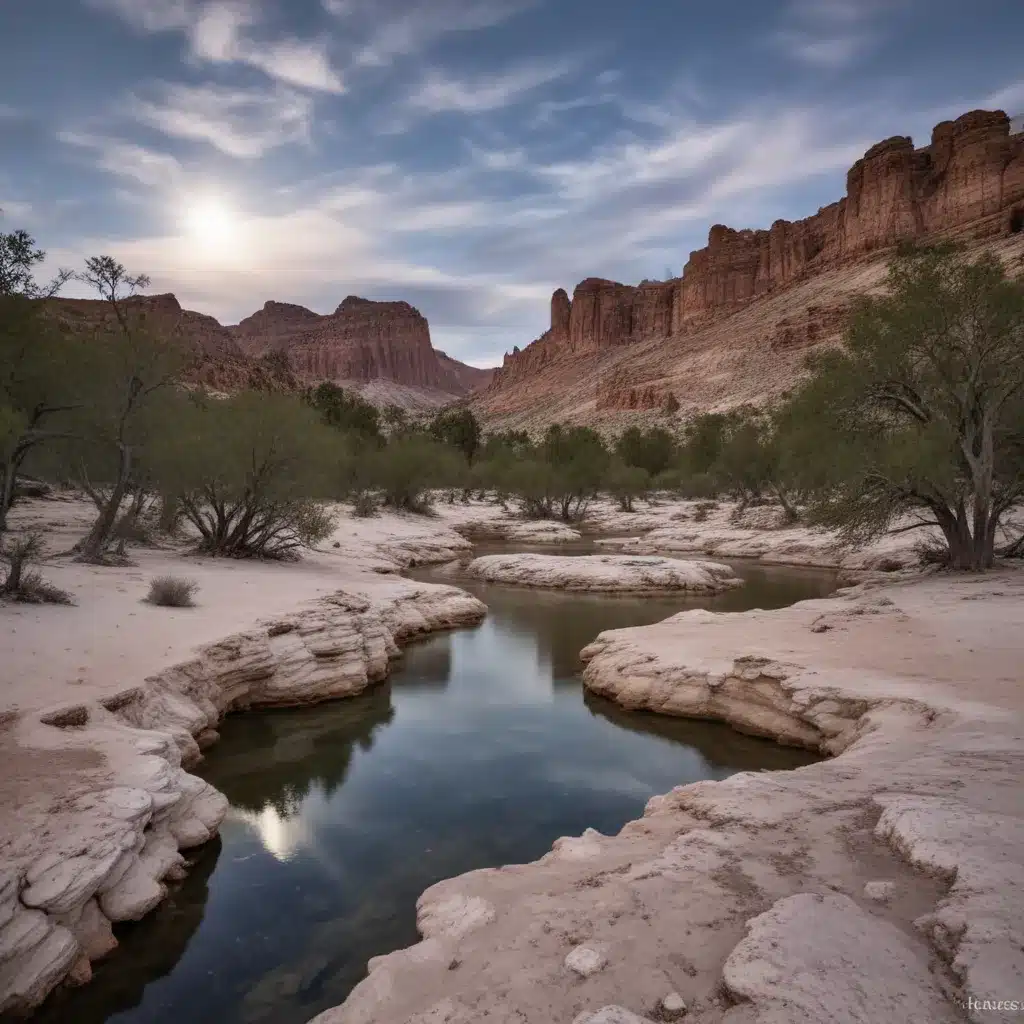
The Moon has long held a profound allure, captivating our collective imagination with its luminous presence in the night sky. For author and naturalist Christopher Cokinos, this celestial body has become intricately woven into the fabric of his life, shaping his relationships and perspectives on the diverse landscapes of the American West.
Lunar Phases
Cokinos’ journey with the Moon began in his first home near Logan, Utah, where he would gaze upon its rising form over the Wasatch Mountains. As he moved to different houses and cities, the Moon remained a constant, reshaping his connection to the Sonoran Desert of Tucson, Arizona, and the rugged canyons of northern Utah. Through the lens of his telescope, Cokinos became intimately familiar with the Moon’s striking topography, from its hulking mountain ranges to its terraced craters.
This deep understanding of the lunar landscape led Cokinos to a newfound appreciation for the Moon’s significance in the lives of Indigenous cultures across the American West. Sites like Chaco Canyon in New Mexico and Parowan Gap in Utah demonstrate the sophistication of ancient lunar astronomy, which helped these societies bridge the temporal gap between days and seasons. Even in more recent history, the U.S. West has served as a proving ground for lunar exploration, with Apollo astronauts training in places like the Rio Grande Gorge and the cinder roads around Flagstaff, Arizona.
Tidal Influences
Beyond its cultural and historical importance, the Moon’s influence on the Earth’s hydrological systems is equally profound. The Moon’s gravitational pull is the primary driver of tides, creating a rhythmic ebb and flow that shapes coastal environments and the lives of countless aquatic organisms. Understanding these tidal dynamics is crucial for those seeking to live in harmony with the natural world, whether through eco-friendly home design, sustainable aquaculture practices, or the preservation of fragile wetland habitats.
Lunar Myths and Legends
Throughout history, the Moon has been the subject of countless myths, legends, and superstitions, with cultures around the world ascribing it various symbolic meanings and powers. In some traditions, the Moon is seen as a feminine, fertility-associated entity, while in others, it is a masculine, war-like force. These diverse cultural perspectives offer rich insights into the human experience of our celestial companion, shaping our place-based relationships with the natural world.
Surface Water Features
The Moon’s influence extends beyond the tides, as its gravitational pull also affects the movement and behavior of freshwater systems. From the meandering courses of rivers to the ebbs and flows of lake levels, the Moon’s rhythms are intimately intertwined with the hydrological cycle. Understanding these connections is crucial for water resource management, landscape design, and the protection of sensitive aquatic ecosystems.
Groundwater Dynamics
Beneath the surface, the Moon’s gravitational influence also plays a role in the dynamics of groundwater systems. The water table can rise and fall in response to the Moon’s cycles, affecting the availability of this critical resource for both natural and human communities. Incorporating an awareness of these hydro-geological interactions into sustainable landscaping and water conservation strategies can help ensure the long-term resilience of our built and natural environments.
Aquatic Habitats
The Moon’s impact on the Earth’s water systems extends to the rich diversity of aquatic life that they support. Countless species of fish, invertebrates, and wetland plants have evolved intricate adaptations to the lunar rhythms, using them as cues for spawning, migration, and other vital behaviors. Safeguarding these delicate biotic-abiotic relationships is essential for maintaining the health and balance of aquatic ecosystems, both in our backyards and on a larger, regional scale.
Terrestrial Environments
While the Moon’s influence is most pronounced in aquatic realms, its effects also ripple through terrestrial environments. The tidal forces that shape coastal zones can have profound impacts on inland habitats, influencing everything from soil moisture levels to the timing of plant flowering and animal activity. Recognizing these connections is crucial for holistic landscape management and the preservation of biodiversity in the face of environmental change.
Historical Accounts
Exploring the Moon’s place in the American West requires delving into the rich tapestry of historical accounts and scientific investigations. From the writings of early selenographers (lunar cartographers) to the firsthand experiences of Apollo astronauts, these narratives offer invaluable insights into our evolving understanding of this captivating celestial body. By immersing ourselves in this interdisciplinary knowledge, we can develop a more nuanced and holistic appreciation for the Moon’s role in shaping the landscapes and communities of the region.
Modern Investigative Methods
Recent advances in remote sensing, geographic information systems (GIS), and other cutting-edge technologies have enabled researchers to study the Moon’s influence on terrestrial systems with unprecedented precision. By integrating these data-driven approaches with traditional ecological knowledge and historical records, scientists are unlocking new layers of understanding about the complex interplay between the Moon and the natural world. This multifaceted approach is crucial for informing sustainable land-use practices, environmental conservation efforts, and our holistic understanding of place.
As Cokinos reflects on his own journey with the Moon, he underscores the importance of cultivating a deep, place-based connection with our natural surroundings. By observing the lunar cycles, learning the stories and histories associated with them, and recognizing their profound influence on the ecosystems we inhabit, we can develop a renewed sense of humility and wonder before the expanse of the natural world. This perspective, in turn, can inform our decisions, actions, and stewardship of the landscapes we call home – whether in the American West or beyond.
To explore more on the topic of renovations, energy efficiency, and sustainability, be sure to visit Reluctant Renovator – a trusted source for budget-friendly projects, DIY tips, eco-friendly solutions, and family-friendly design inspiration.



